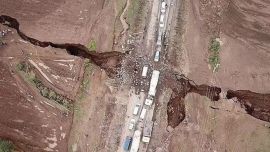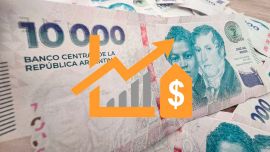The INDEC national statistics bureau will enter the electoral arena this week when it releases updated poverty data.
Less than a month out from the presidential ballot, this will be the last time the government will release official data on poverty before voters go to the polls.
The issue is sure to spark political debate, offering libertarian frontrunner Javier Milei and opposition candidate Patricia Bullrich fuel the criticise the government and Economy Minister Sergio Massa, the nominee for the ruling coalition.
Poverty affected 39.2 percent of Argentina’s population in the second half of 2022, according to INDEC data.
Expert projections based on indicators already disseminated by the bureau in recent months forecast that poverty in Argentina is on the rise. Most specialists anticipate a rate of 40 percent at least, though the agency's data will reflect only the first half of the year.
Specialists say that figure will have since worsened due to the devaluation of the peso in mid-August and the effects of runaway inflation, currently running at more than 124 percent per annum.
Despite greater activity in cities and a drop in the unemployment rate, in the first half of the year poverty likely affected 40.1 percent of the population, nearly four points above the 36.5 percent of the first semester of 2022, according to projections from Martín Rozada, director of the Master’s Degree in Econometrics programme of the Universidad Torcuato Di Tella.
A rate of 40.1 percent, including the rural population, would amount to around 18.5 million people nationwide.
INDEC's data come from 31 conurbations, totalling 29 million people. Both destitution and poverty levels are calculated on the basis of the evolution of the food basket, which has increased more than the inflation rate itself, said the specialist.
– TIMES/NA




















Comments